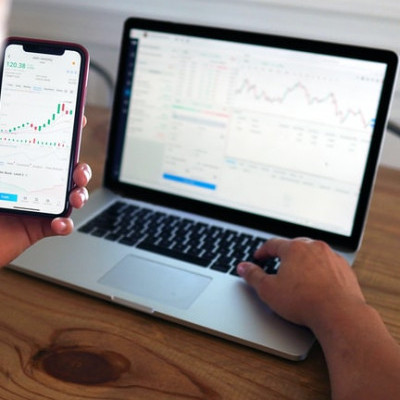Options involve Risk
Traders and especially new traders must always be aware of the fact that Option involve risk and are not suitable for all investors. Please keep this in mind, when you begin to put on trades.
Now, with that in mind, it’s important to know that one of the big draws for investors looking to trade options is the margin relief offered when trading such products. Sounds simple. Right? So, how do we put this in a workable context?
Leverage and Notional Value Leverage and notional value are key concepts in financial markets. Leverage refers to the use of borrowed funds to amplify potential returns or losses in an investment. Notional value represents the nominal or face value of a financial instrument, which determines the size of the investment.
Think in terms of Notional value.
To be quite honest it took me awhile to internalize the idea of notional value. I don’t know why exactly. It was just one of those terms that couldn’t find a place to sit in my brain. Anyway.
The notional value of a position is the real amount at risk, excluding margin relief. For instance, If we own 100 shares of stock at $50.00 per share, we have $5000 of notional value at risk. If the stock price drops to $0.00, we stand to lose $5000.
Without margin, we need to put up the full $5000 to buy those 100 shares of stock. 200 shares requires the full $10,000.00, etc. In a margin account, we are offered 2:1 leverage on stock purchases.
How does leverage work?
Basically, that same 100 shares of stock would only require $2500 of capital to purchase. What we have to remember is that we still have that same $5000 of notional value. In other words, we only have to put up $2500 at first, but if the stock price goes to $0.00 we still lose $5000. Understanding the difference between leverage & notional value is one of the most important concepts to learn. Leverage just enables us to put up less money to buy shares than a cash-secured account:
Leverage comes in all shapes and sizes. More leverage can give us a higher return on capital, as we’re not required to put up as much, but it can also magnify losses quickly. Understanding leverage and how we can use it is imperative for futures, options, and stock traders alike.
Leverage in Options
When it comes to options, leverage works a little differently. Unlike stock where a $10,000 deposit will allow you to trade $20,000 of a security, a $10,000 deposit into your options account gives you $10,000 of buying power. But the amount you need to put up to enter a trade can be significantly less.
If you have a margin account and have full margin for options, the difference lies in the buying power reduction (BPR).
Let’s say you want to buy a call options on Amazon which is currenty trading for $102.05. If you needed to buy the shares outright, you would need to put up about $5000 in a margin account. However, purchasing a 102 call options, which would give you the right to buy Amazon at $102 would only require $440 of buying power…about 1/10 that of owning the shares outright. This is the power of leverage in options trading.

You may be thinking you could put on 10 trades instead of one. This can be a very risky approach. It is possible, but, I don’t recommend it. There is a bit more to it than just leverage, which you will learn as you move along.
The important takeaway here is to realize that options give you the ability to use much less capital to put on trades than buying shares outright.
The 10 Pillars of Options Trading
One of the 10 Pillars of trading followed by the traders at tastytrade is Trade Small and Trade Often. And leverage allows you to do just that. But you have to be prudent and not over leverage and take on more risk than you can handle.
Happy Trading
If you have any questions or suggestion, please leave them in the comments section below.






